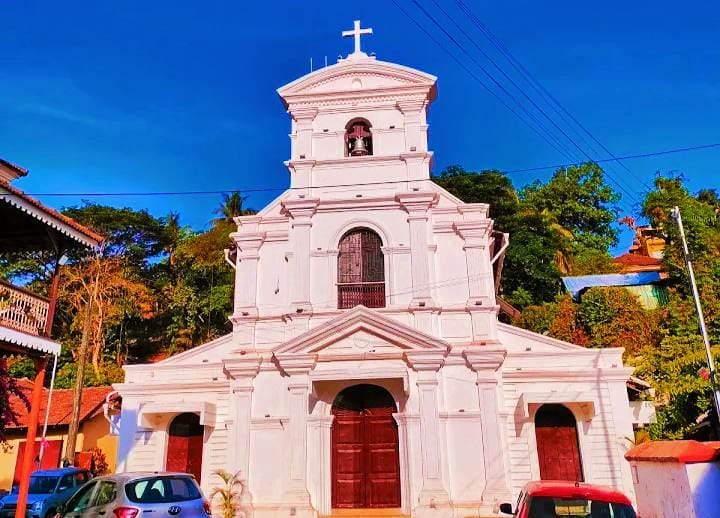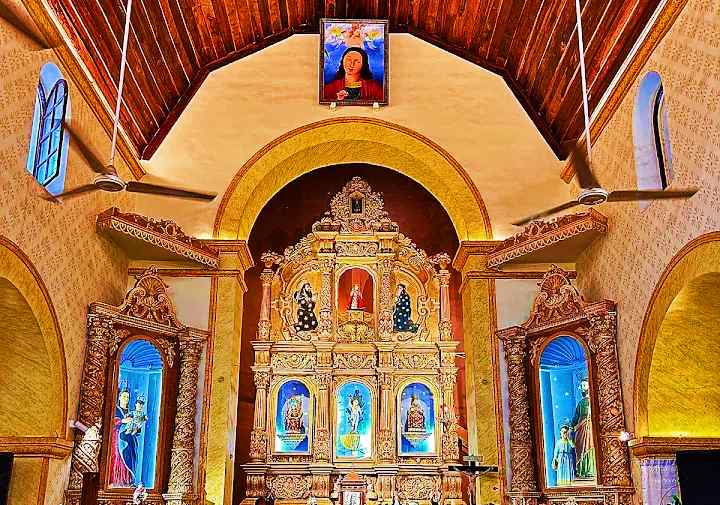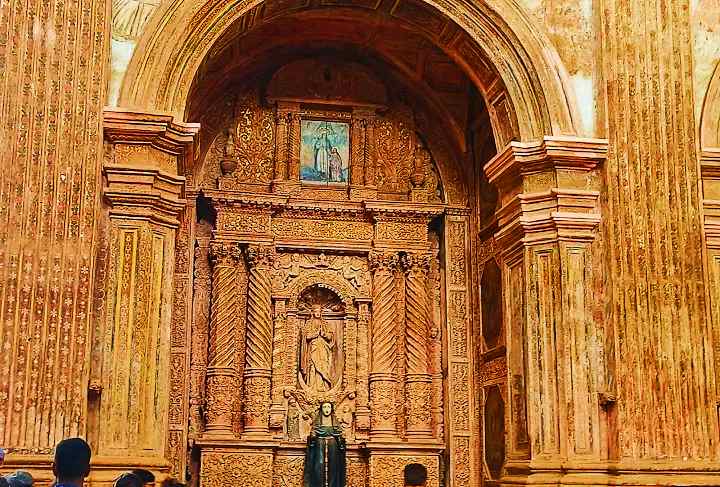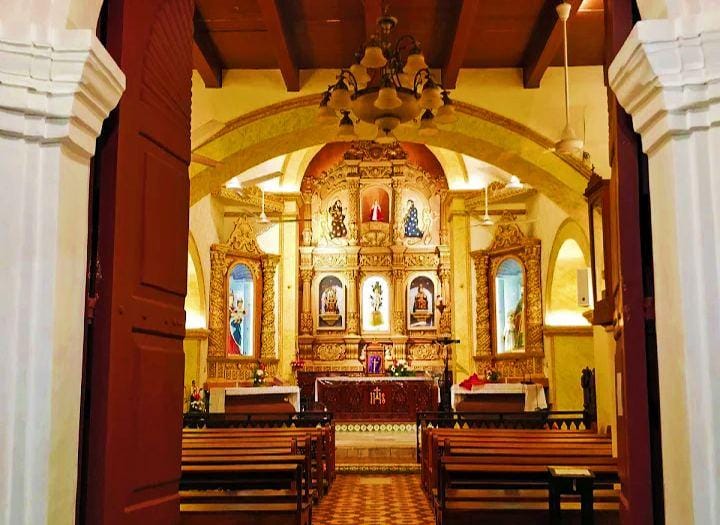
St. Sebastian’s Chapel is a 19th-century Portuguese-era chapel located in Fontainhas, Panaji (Panjim), Goa. Known for its unique crucifix and Portuguese-Baroque architecture, it stands as a silent witness to Goa’s colonial past and enduring Catholic heritage.
1. Historical Background
A. Portuguese Colonial Era (1818–1961)
- Built in: 1818, during the late Portuguese rule.
- Purpose: Served as a neighborhood place of worship for Portuguese residents and Goan Catholic converts in the Fontainhas quarter.
- Architectural Style: Portuguese-Baroque with a whitewashed façade, arched doorways, and modest ornamentation.

B. The Legend of the Grim Crucifix
- Unique Feature: Houses a rare crucifix of Christ with open eyes—a rare depiction symbolizing divine judgment.
- Historical Origin: The crucifix was brought from the Palácio Idalcão (Palace of the Inquisition) in Old Goa after the Inquisition was abolished.
It was historically used to instill fear during trials of the accused.
C. Post-Liberation (1961–Present)
- 1961: After Goa’s liberation from Portuguese rule, the chapel remained under the Archdiocese of Goa and continued functioning as an active religious site.
- 1980s–Today: The chapel gained attention as a heritage landmark, particularly due to its rare crucifix and its location in the culturally rich Fontainhas area.

2. Architectural & Religious Significance
A. Design Highlights
- Exterior: Whitewashed walls with a simple bell tower, embodying the quiet elegance of Portuguese colonial architecture.
- Interior Artwork:
- The striking crucifix above the altar.
- Traditional wooden pews and fine detailing reflecting Indo-Portuguese craftsmanship.
B. Religious Importance
- Active Use: Regular Masses are held in Konkani and Portuguese.
- Feast Day: The Feast of St. Sebastian is celebrated on January 20 with devotion and local participation.

3. Cultural & Tourist Appeal
- Fontainhas Heritage Walk: A key stop on guided walking tours exploring Goa’s Latin Quarter.
- Photography Spot: The chapel’s old-world charm and historic crucifix attract heritage lovers and photographers.
- Spiritual Refuge: Offers a quiet space for reflection, away from Panaji’s bustling city life.
Conclusion
St. Sebastian’s Chapel is more than a colonial-era structure—it is a living symbol of Goa’s spiritual continuity and Indo-Portuguese cultural fusion. Its rare crucifix, modest architecture, and deep-rooted faith make it an essential stop for those seeking to understand Goa’s layered history and religious heritage. Whether you visit for its artistry, faith, or history, the chapel offers a timeless window into the soul of Fontainhas.










Add comment